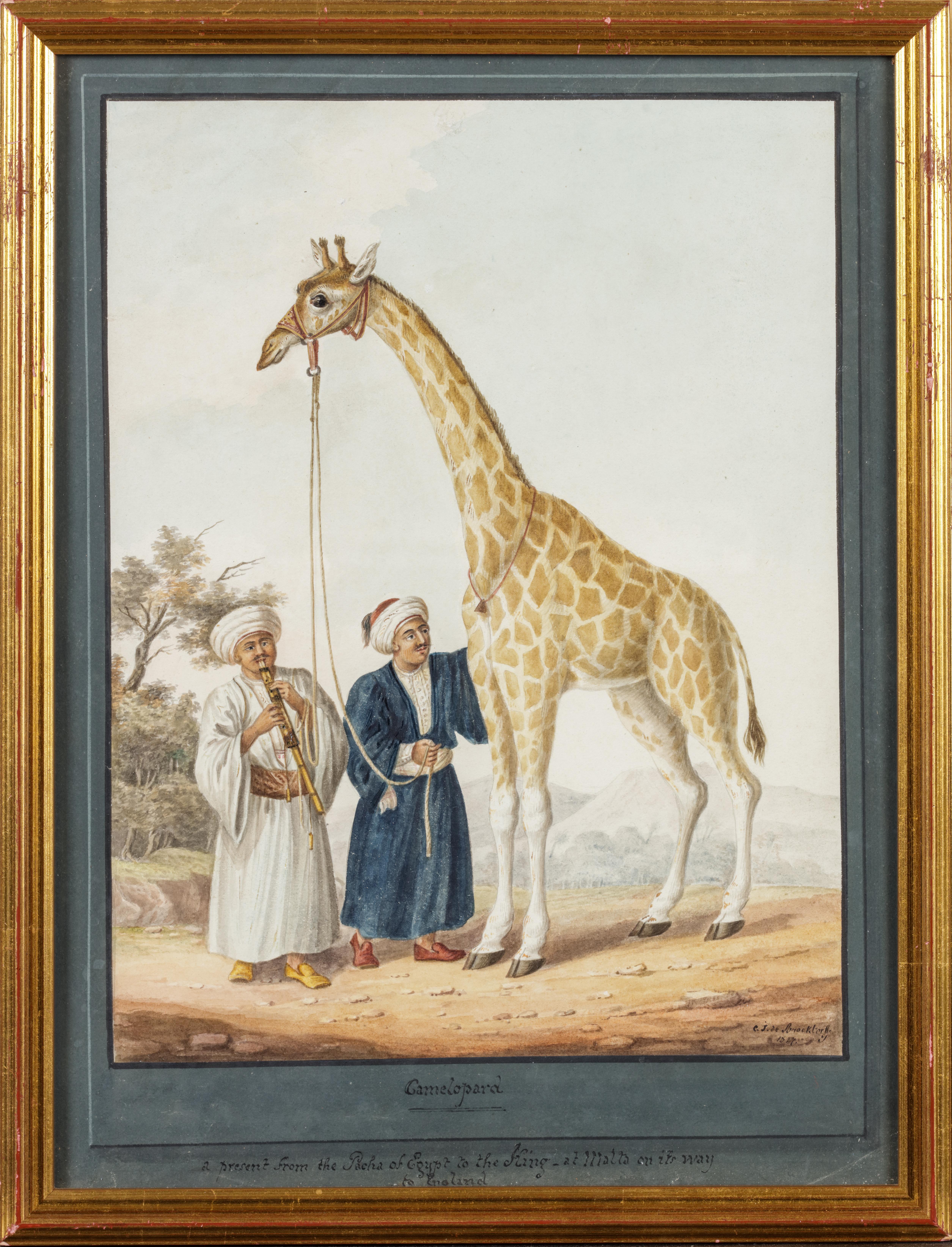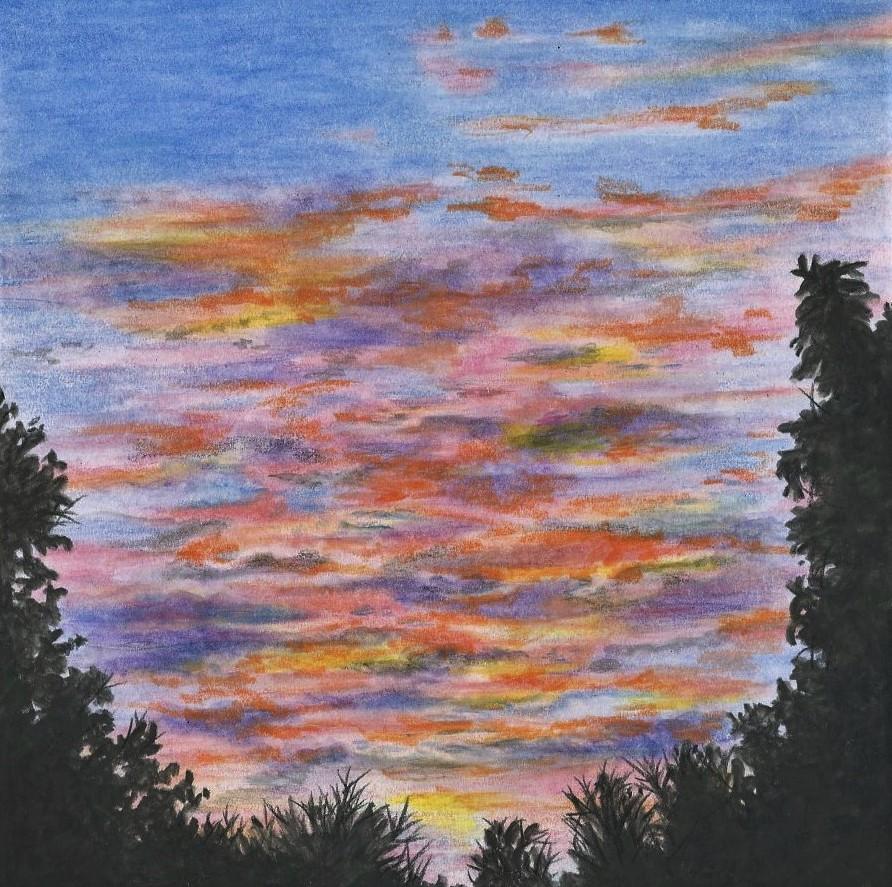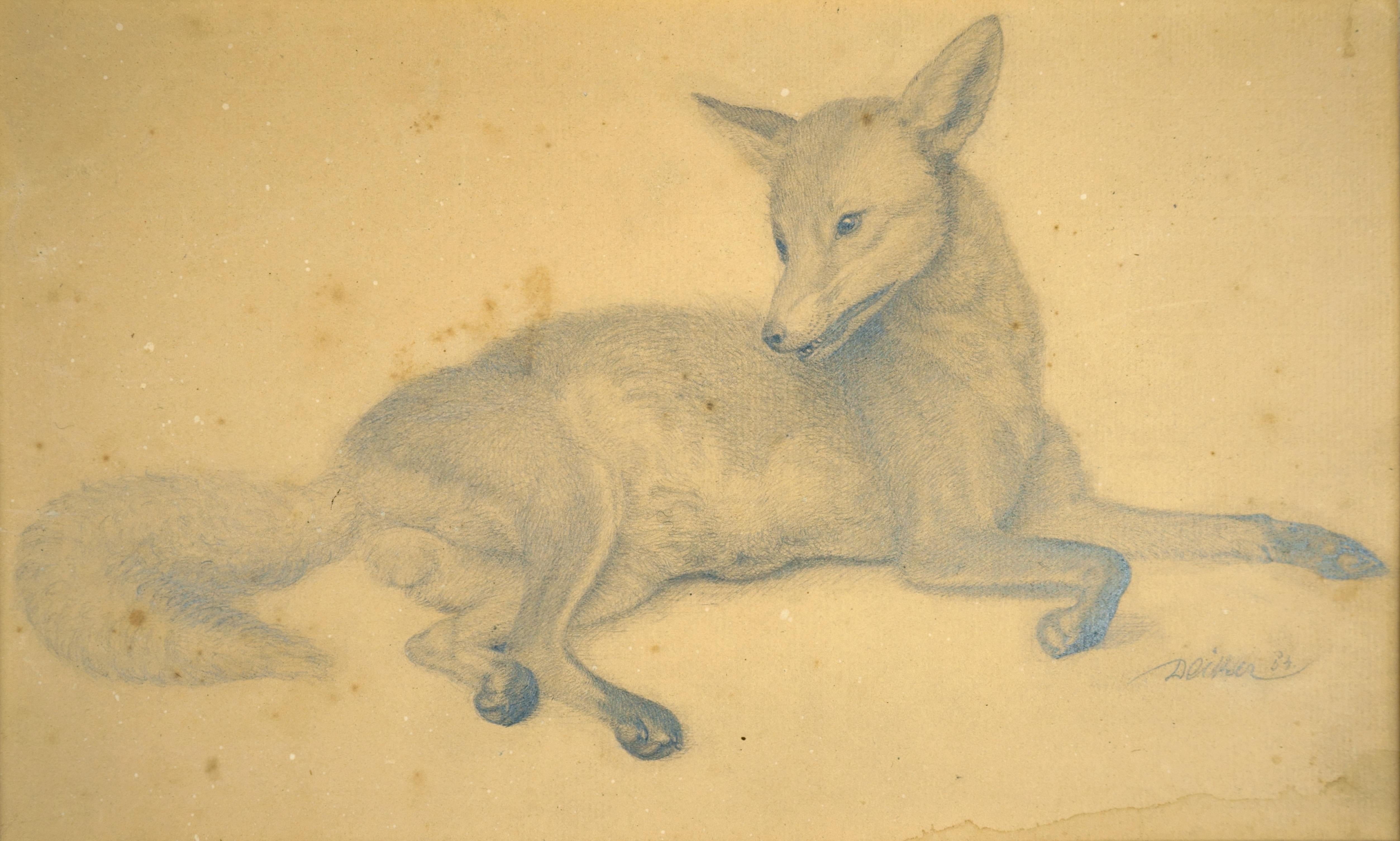Items Similar to Cows Graze in a Meadow, Pencil, 1907
Want more images or videos?
Request additional images or videos from the seller
1 of 8
Nils KreugerCows Graze in a Meadow, Pencil, 19071907
1907
About the Item
This drawing by Nils Kreuger, a Swedish artist born on October 11, 1858, in Kalmar and who passed away on May 11, 1930, in Stockholm, showcases a quintessential theme found in his work. The sketch depicts several cows grazing in a field, captured swiftly and with a confident hand, embodying the essence of Kreuger's artistic pursuits. The landscape, drawn in 1907 as indicated, is indicative of Kreuger's fascination with the Swedish countryside, a theme recurrent in his oeuvre after his return from France in the late 19th century.
Nils Kreuger, a pivotal figure in Swedish art, was deeply influenced by his studies in Paris and his interactions with artists at the Grez-sur-Loing artist colony. His early works in France were influenced by the plein-air painting of the French countryside, characterized by the sensitive use of colour and light to capture various times of day and weather conditions. Upon his return to Sweden, Kreuger became a founding member of the Varberg School alongside Richard Bergh and Karl Nordström, transitioning to a style that emphasized the symbolic and national-romantic over the purely observational. This period saw him focusing on landscapes, often featuring grazing livestock, with a stylistic shift influenced by the likes of Paul Gauguin and Vincent van Gogh. Van Gogh's influence is particularly noted in Kreuger's adoption of a unique technique involving dots and small lines, which articulated the terrain and enriched the emotional content of his work.
In later years, Kreuger’s technique evolved further, replacing ink lines with colour patches applied with vigorous brushstrokes, contributing to a mosaic-like surface in his paintings. Despite the influence of van Gogh, Kreuger’s work seldom sought the same intensity of expression, instead finding a unique voice through the formal and decorative qualities of his lines and colors.
Kreuger’s contributions to Swedish art are significant, with his work displayed in prestigious museums such as the Nationalmuseum in Stockholm, the Thielska Galleriet, and internationally.
pencil, paper
paper 9 x 14 cm
frame 18 x 23.5 cm
Provenance:
The artist;
Gifted to the artist's sister, Elisabeth Gustafva Kreuger;
Passed down to her daughter, Rut Elin Moren Lindell;
Inherited by her son, Bo Lindell (1831-2012);
Subsequently, he passed to his son, Ulf Lindell (born 1956).
- Creator:Nils Kreuger (1858 - 1930, Swedish)
- Creation Year:1907
- Dimensions:Height: 7.09 in (18 cm)Width: 9.26 in (23.5 cm)
- Medium:
- Movement & Style:
- Period:
- Condition:Very good condition. New frame with UV-protected glass.
- Gallery Location:Stockholm, SE
- Reference Number:1stDibs: LU1445214120502
About the Seller
5.0
Platinum Seller
These expertly vetted sellers are 1stDibs' most experienced sellers and are rated highest by our customers.
Established in 2020
1stDibs seller since 2020
116 sales on 1stDibs
Typical response time: <1 hour
Associations
International Confederation of Art and Antique Dealers' Associations
- ShippingRetrieving quote...Ships From: Stockholm, Sweden
- Return PolicyA return for this item may be initiated within 2 days of delivery.
More From This SellerView All
- Horses by the Shore, ink on paper, 1909Located in Stockholm, SEThis drawing by Nils Kreuger, created in 1909, captures a serene moment in nature featuring a group of horses, some grazing while others are in motion, set against a backdrop of wate...Category
Early 1900s Naturalistic Animal Drawings and Watercolors
MaterialsPaper, Ink, Pencil
- A Team of Horses, 1905Located in Stockholm, SEThis pastel drawing by Nils Kreuger, dating from 1905, presents an intimate moment between two horses that appear to be embracing each other. The use of pastel chalks is confident, i...Category
Early 1900s Naturalistic Animal Drawings and Watercolors
MaterialsPaper, Crayon, Pastel
- Two Mandarin Ducks, Circle of Sunqua, Gouache on Pith Paper, Qing DynastyBy SunquaLocated in Stockholm, SECircle of Sunqua (active 1830-1870) Two Mandarin Ducks pith paper (rice paper) gouache c.1830-1870 China Also close to: Chincqua, Lam Qua, Youqua. Compare ...Category
19th Century Animal Drawings and Watercolors
MaterialsGouache, Rice Paper
- Two Horses by the Shore, Painted With Pastel Crayon, 1904Located in Stockholm, SEThis exquisite small pastel painting by the renowned Swedish artist Nils Kreuger measuring just 11 x 14 cm. Signed and dated July 17, 1904, the ...Category
Early 1900s Animal Drawings and Watercolors
MaterialsCrayon, Pastel, Paper
- Landscape View With Cows Drinking Water by American Artist Hugo Anton FisherLocated in Stockholm, SEAmerican artist Hugo Anton Fisher was primarily known for painting landscapes in watercolor. He was born into a family of artists in Kladno, Bohemia....Category
Late 19th Century American Impressionist Animal Drawings and Watercolors
MaterialsPaper, Watercolor
- A Rural Landscape With Cows and Horses, Watercolor by Hilding LinnqvistLocated in Stockholm, SEThis watercolor by Hilding Linnqvist who was a Swedish artist born in 1891 and passed away in 1984. Linnqvist, known for his association with the Naïvist movement, often described as...Category
Early 20th Century Romantic Animal Drawings and Watercolors
MaterialsWatercolor
You May Also Like
- The King's CamelopardLocated in Amsterdam, NLCharles Frederick de Brocktorff (1775–1850) ‘Camelopard – a present from the Pacha of Egypt to the King – at Malta on its way to England’ Signed and dated C.F. de Brocktorff. / 1827. lower right, inscribed as titled in the painted margins lower centre. Pencil and watercolour heightened with gold paint and gum arabic on paper, 36.8 x 27.9 cm A gift so majestic, it made kings blush, and a gift so grand, it would startle Europe into a craze. Pasha Muhammad Ali of Egypt (1805-1848) did it in 1827: he sent to Europe three magical spotted, horned creatures, each with a neck reaching the skies and legs as long as a house is high. One giraffe to King Charles X of France, one to Francis I of Austria and the most fabled one to King George IV of England. A curious sight for Europeans, who had not seen such a beast since the Medici giraffe in 1487. Few animals created more of a stir in Europe than these royal...Category
1820s Naturalistic Animal Drawings and Watercolors
MaterialsGold
- Nightfall, Original Landscape Drawing, 2018Located in Boston, MAArtist Commentary: A stunning, colorful Texas sunset. Keywords: Landscape & Nature Artist Biography: Judith grew up 15 miles north of Milwaukee in the ...Category
21st Century and Contemporary Naturalistic Landscape Drawings and Waterc...
MaterialsPaper, Watercolor, Pencil
- Naturalistic Portrait Drawing of a HorseLocated in Houston, TXNaturalistic portrait of a horse in colored pencil on paper. The drawing is framed in a wooden frame with a cream trim. The work is signed and dated by the artist in the bottom right corner. Dimensions Without Frame: H 13.5 in. x W 10.5 in. Artist Biography: William Robert Stevenson was born in 20 May 1925 in Eugene, Oregon. His family moved to Minneapolis, MN but he promptly returned to Oregon and Washington during the Great Depression to work in the Works Progress Administration (WPA). Hoping to study Art, his future was sidetracked when he was drafted into the United States Army at age 17 years old in early 1942. Being a strong swimmer, and having worked at stables as a child, he initially served in the last US Cavalry Corps, and also as a Swimming Instructor for the United States Army. Upon the abolition of the Cavalry Corps, he was trained as a Gunnar and Tank Commander for the M-4 Sherman Tank under General Patton...Category
1940s Naturalistic Animal Drawings and Watercolors
MaterialsColor Pencil, Paper
- E Wood, Farmhouse Near Godalming, Surrey, WatercolourLocated in Cheltenham, GBThis charming late 19th-century watercolour by British artist E Wood depicts a beautiful 15th/16th century farmhouse near Godalming in Surrey, England. As chickens rummage for food ...Category
1880s Naturalistic Landscape Drawings and Watercolors
MaterialsPaper, Watercolor, Gouache, Pencil
- Vigilant Fox - The psyche of the fox -Located in Berlin, DECarl Friedrich Deiker (1838 Wetzlar - 1892 Düsseldorf). Vigilant fox. Pencil drawing on brown paper, 18 × 29.5 cm (inside measurement), 31.5 x 43.5 cm (mount), signed and dated "Deiker [18]54" at lower right. - a little bit stained, with a light water stain at lower right About the artwork Carl Friedrich Deiker's consummate ability to depict animals is already evident in this early work. He brought a whole new psychological dimension to animal painting, so that one could literally speak of animal portraits. The naturalistic appearance of the fox alone makes it seem alive. Every strand of muscle, even every hair, is captured, which requires an intensive artistic study of animal anatomy and physiology. But the fox's real liveliness comes not from its natural appearance, but from its internal movement: Stretched out, it has been brought out of rest. It turns around and, with its ears pricked up, looks intently in the direction from which it has seen something. His mouth is slightly open and his pointed teeth are bared, as if he were growling. Tension gradually takes hold of his whole body. While the hind legs were still in a relaxed position, closely observed by Deiker, one front leg was already raised, ready to begin a rising movement. The fox seems so alarmed with all its senses that one gets the impression that, at any moment, its tail will move jerkily and the animal will jump up. While wild animals have traditionally been portrayed as beasts or anthropomorphised, often for caricatural purposes, Deiker explores their inherent nature by attempting to capture their psychic impulses. The wild animal is neither bestial nor human, but a creature in its own right, valued by Deiker for its own sake. In this way, he brought the dignity of the animal into representation and raised animal painting to a whole new artistic level. About the artist Carl Friedrich Deiker was the son of the drawing teacher Christian Friedrich Deiker and the younger brother of the animal painter Johannes Deiker. In addition to the family art lessons, Christian Friedrich shared a studio with his brother Johannes at Braunfels Castle, Deiker attended the drawing academy in Hanau, and from 1858 he was a student at the Karlsruhe Art Academy, where he studied under the landscape painter Johann Wilhelm Schirmer. Carl Friedrich Deiker was already in demand as an artist during his first year: Grand Duke Frederick I of Baden, Margrave Max of Baden and Grand Duke Michael of Russia bought hunting scenes by him. In 1859 he went on a study trip to the Reinhardswald. Just as the Barbizon School had rediscovered the landscape, Deiker opened up the forest for animal painting. From 1861-64 Deiker had his own studio in Karlsruhe, then moved to Düsseldorf, where his brother Johannes followed four years later. Deiker married a daughter of the landscape painter Karl Hilger and remained in Düsseldorf until his death. In 1868 he finally achieved international fame with his painting 'Pursued Noble Deer' and was regarded as a virtuoso new founder of animal painting. "Deiker brought for the first time a truly great artistic quality to animal painting [...]". - Hans Vollmer From 1870 he participated in the academic art exhibitions in Berlin, Dresden, Munich and Hanover. He was also very busy as an illustrator. He drew for the Gartenlaube, the Salon, the Universum, and produced many of the finely illustrated hunting and animal books of the period. He also worked as a printmaker, while his oil paintings circulated as reprints by Franz Dinger. From 1865 to 1892 Deiker was a member of the artists' association Malkasten. Carl Friedrich Deiker's life's work was honoured with a large posthumous memorial exhibition at the Düsseldorf Kunsthalle in 1892. His son Carl Deiker, born in 1879, also became a painter. Selection of art museums that own works by Carl Friedrich Deiker: Hamburger Kunsthalle / Kunsthalle Karlsruhe / Kunstmuseum Düsseldorf / Wallraff Richartz Cologne. Selected Bibliography H. Schmidt: Johannes and...Category
1850s Naturalistic Animal Drawings and Watercolors
MaterialsPencil
- Lioness Fusain Drawing by Jean PoulainBy Jean PoulainLocated in Pasadena, CAJean Poulain 1884-1967 Jean Poulain was born in 1884 in Katanga (former Belgian Congo). Self-taught artist from an early age, he will be in search of all the emotions and beauty of ...Category
1930s Naturalistic Figurative Drawings and Watercolors
MaterialsCarbon Pencil




